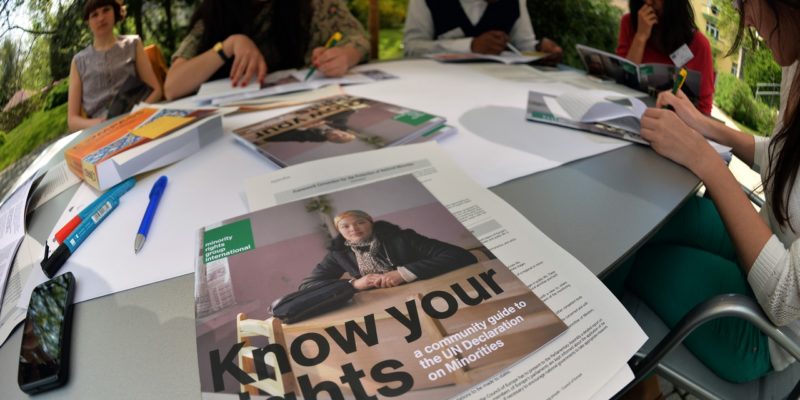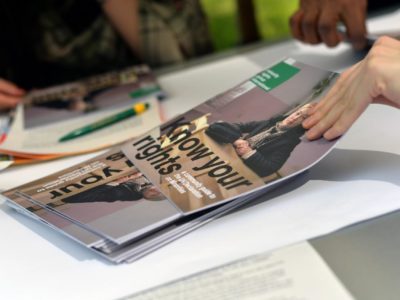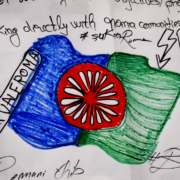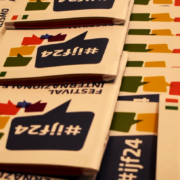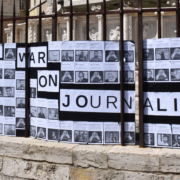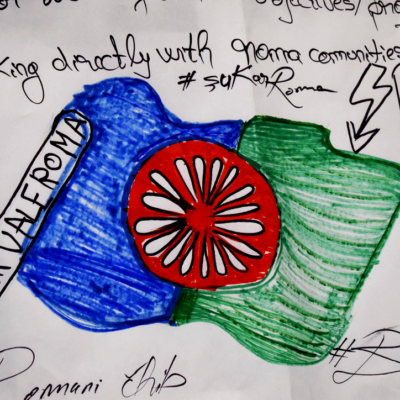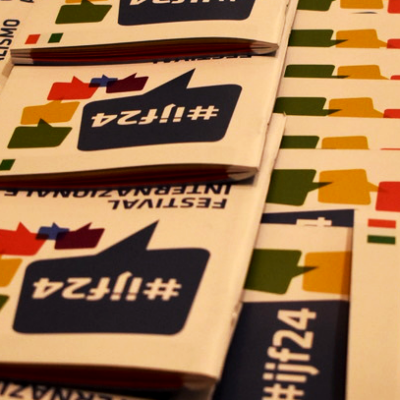by Luisa Ferreira (Brazil)
The third day of the Minority Voices study session gave the participants some first-hand experience with minorities in Budapest. However, before that there were some last theoretical sessions and reflections on media and human rights.
Right after breakfast, the young activists and media makers taking part in the programme were divided into four groups. They analysed different case studies regarding minorities. They referred to documents such as the Universal Declaration of Human Rights and the European Convention on Human Rights. The groups discussed violations of human rights affecting people from Denmark, Kenya, Kyrgyzstan, Ukraine and Turkey.
The next part of the training was focused on how to use a human rights-based approach to minority communities and how to apply the Concord Code of Conduct on Images and Messages to photojournalism. The session was conducted by Bernadett Sebaly, from Minority Rights Group, who provoked participants into questioning their daily journalism practices.
After the daily editorial meeting with media facilitators, there was one of the most anticipated moments of the week: a city tour focused on two of the minority communities of Budapest: the Roma and the Jewish people. Lead by guide Zoltan Nagy, the participants walked through the streets of the 8th district. While it usually goes unnoticed to most visitors, this area of the Hungarian capital offers an interesting perspective of the city and its mosaic ethnic composition.
In the first part of the tour, the participants met representatives of both communities and talked to them about the problems they face. Then they visited Teleki Tér, the last remaining synagogue in the city that follows the Hassidic/Sfard pray liturgy. There the journalists and activists heard not only about this special place, but also about the history of Jewish Hungarian people and their struggle against discrimination.
What followed was a stroll by the streets of the neighbourhood, which houses a high percentage of the Roma population. Although some people consider the area unsafe, Zoltan argued to the contrary. In fact, what could be seen in the streets were citizens living their daily lives, surrounded by classical buildings that are in need of restoration, but still maintain their charm.
All in all, the day served to wrap up the theoretical knowledge shared during the first part of the week. It also gave everyone a little taste of what’s coming next: the making of multimedia content related to minority issues in Hungary.


